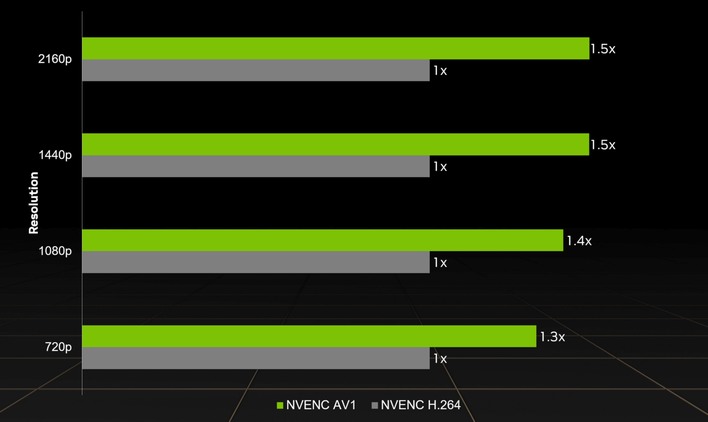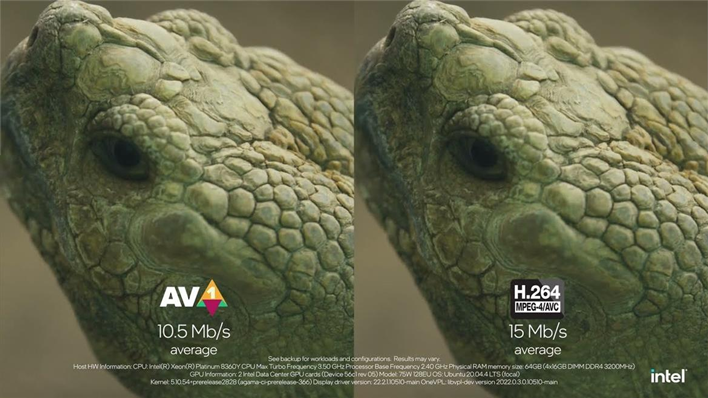AV1 Streaming Comes To OBS For Higher-Quality Output On GeForce, Arc And Radeon

As a recap, AV1 is a newer video codec than the commonly-used AVC, also known as H.264. It is much more computationally-intensive both to playback and create, but given that video encoding and decoding are typically done using fixed-function hardware accelerators, that's less important than the fact that it can offer drastically improved video quality at the same bitrate when compared to H.264.
The other problem was that there was no software capable of sending AV1 video to YouTube to begin with. That final issue has now been resolved with the release of OBS Studio 29.1. OBS is of course the Open Broadcaster Software, the FOSS application that almost all live-streamers use to do their thing. OBS is a powerful piece of kit with a great many features, and the latest release adds support for the brand-new Enhanced RTMP.

So with a compatible video card—that's a GPU based on NVIDIA's Ada Lovelace, AMD's RDNA 3, or Intel's Arc Alchemist—and the latest version of OBS, you can start livestreaming to YouTube using the new AV1 codec. But why would you want to?

There is one final caveat to live-streaming using AV1 on YouTube, and that's that people who watch your livestream won't be getting the full-quality AV1 stream; instead, they'll get a video feed transcoded to either AVC or VP9. However, YouTube itself will, and the resulting transcoded video stream will be higher-quality as a result.
Unfortunately, YouTube is the only major video streaming platform that currently has support for Enhanced RTMP, which means that for now, if you want to take advantage of higher-quality AV1 livestreaming, you'll have to do it on YouTube. Sorry, Twitch fans.


